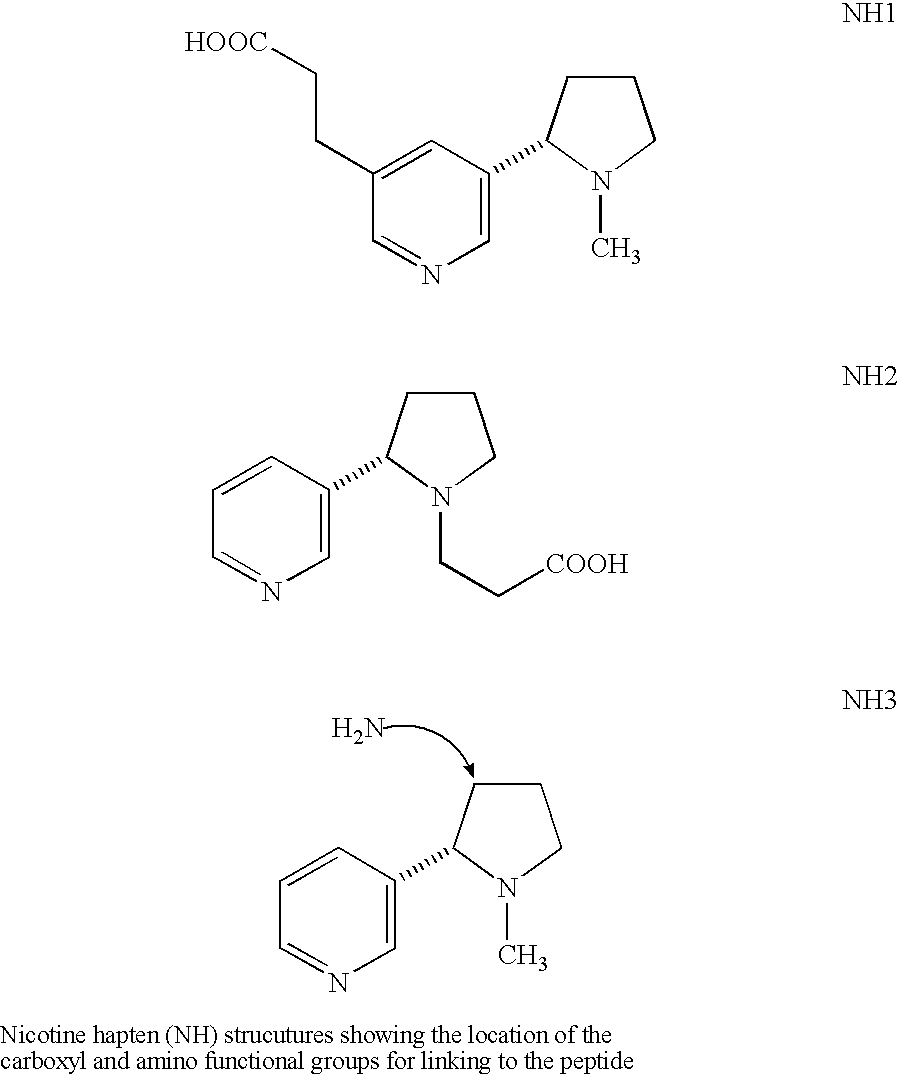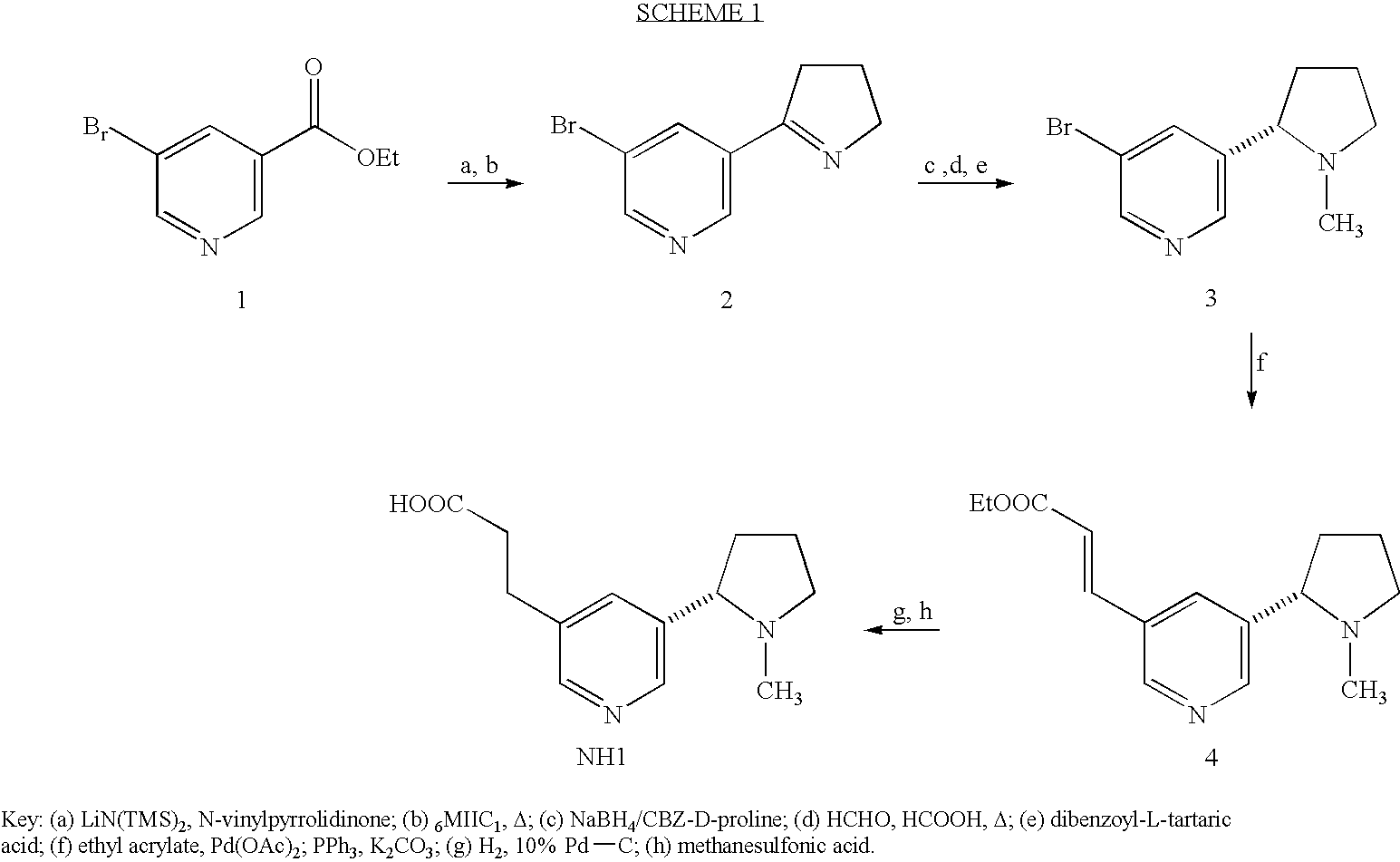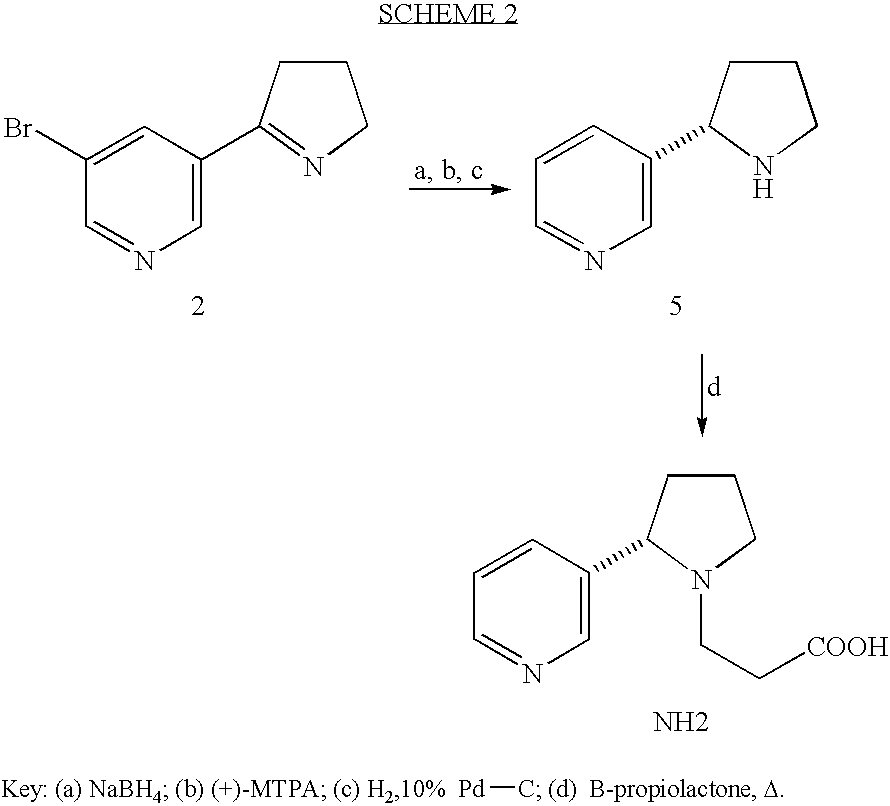Compositions and compounds for use as molecular adjuvant for a nicotine vaccine
a nicotine vaccine and composition technology, applied in the field of vaccines and stimulation of acquired immunity, can solve the problems of cigarette smoking contributing to an increase in systemic bone loss, impairment of the ability to heal bone grafts and fractures, and major risk factors for periodontitis and alveolar bone loss
- Summary
- Abstract
- Description
- Claims
- Application Information
AI Technical Summary
Benefits of technology
Problems solved by technology
Method used
Image
Examples
example 1
Evaluation of Mucin Epitope (MUC1 / C5a Agonist) Conjugate for Recruitment and Activation of Antigen Presenting Cells (APCs) and Stimulation of an Immune Response in Mice
[0124] The C5a receptor is present on numerous antigen presenting cells, including monocytes, macrophages, dendritic cells, and other cell types. In this example, a composite peptide comprising a mucin epitope (MUC1) functionally linked to a decapeptide agonist analog of C5a corresponding to the C-terminal effector region of the natural favor was evaluated for its ability to activate the APCs thereby stimulating an immune response in mice. This evaluation is based on the known property of C5a receptors to internalize and recycle in the antigen presenting cell, thereby acting as ideal candidates for delivering antigens to and simultaneously activating signals in the APCs. Because C5a receptors are particularly common on macrophages, monocytes and dendritic cells, it is believed that the use of a C5a agonist analog to ...
example 2
Evaluation of Serum Amyloid A / C5a Peptide Conjugates for Recruitment and Activation of APCs and Stimulation of Immune Response in Rats
[0148] Serum amyloid A is an acute-phase stress response protein generated by the liver. Along with other acute phase proteins, SAA is secreted in response to systemic inflammatory stress as a protective measure. SAA is of interest because it appears to be an excellent indicator of general, systemic inflammation, which is a phenomenon that is very difficult to quantitate. Because serum levels of SAA have been observed to parallel the rise and fall of the systemic inflammatory response, quantization of serum levels of this peptide would provide an effective means of assessing inflammation. One way to accomplish this is to develop antibodies against SAA that could be used for quantitation such as in an ELISA assay. However, SAA has been particularly recalcitrant to the generation of antibodies against it. In this example, an evaluation was made of the ...
example 3
Production and Characterization of Site-Directed Neutralizing Antibodies Specific for a Peptide (κR(33-52) from the Predicted Amino-Terminal Region of the Human Kappa Receptor
[0153] Receptors for human opioid peptide hormones have been described on numerous cell types. The receptors for μ, κ and δ ligands have recently been cloned from genomic and cDNA libraries derived from normal tissue and cell lines. Considerable homology exists among the μ, κ and δ receptors, except for the N-terminal regions of the receptors. The N terminal region of the human kappa receptor (amino acid residues 1-100) is relatively hydrophilic and would be predicted to be exposed on the surface of the cell membrane. A 20 residue peptide [κR(33-52)], was chosen and used to raise a site directed peptide specific polyclonal antibody (5).
[0154] The method of production of a polyclonal antiserum in rabbits using the molecular adjuvant, C5a-agonist peptide conjugated to the κR epitope is set forth below. The bind...
PUM
| Property | Measurement | Unit |
|---|---|---|
| Fraction | aaaaa | aaaaa |
| Length | aaaaa | aaaaa |
| Length | aaaaa | aaaaa |
Abstract
Description
Claims
Application Information
 Login to View More
Login to View More - R&D
- Intellectual Property
- Life Sciences
- Materials
- Tech Scout
- Unparalleled Data Quality
- Higher Quality Content
- 60% Fewer Hallucinations
Browse by: Latest US Patents, China's latest patents, Technical Efficacy Thesaurus, Application Domain, Technology Topic, Popular Technical Reports.
© 2025 PatSnap. All rights reserved.Legal|Privacy policy|Modern Slavery Act Transparency Statement|Sitemap|About US| Contact US: help@patsnap.com



